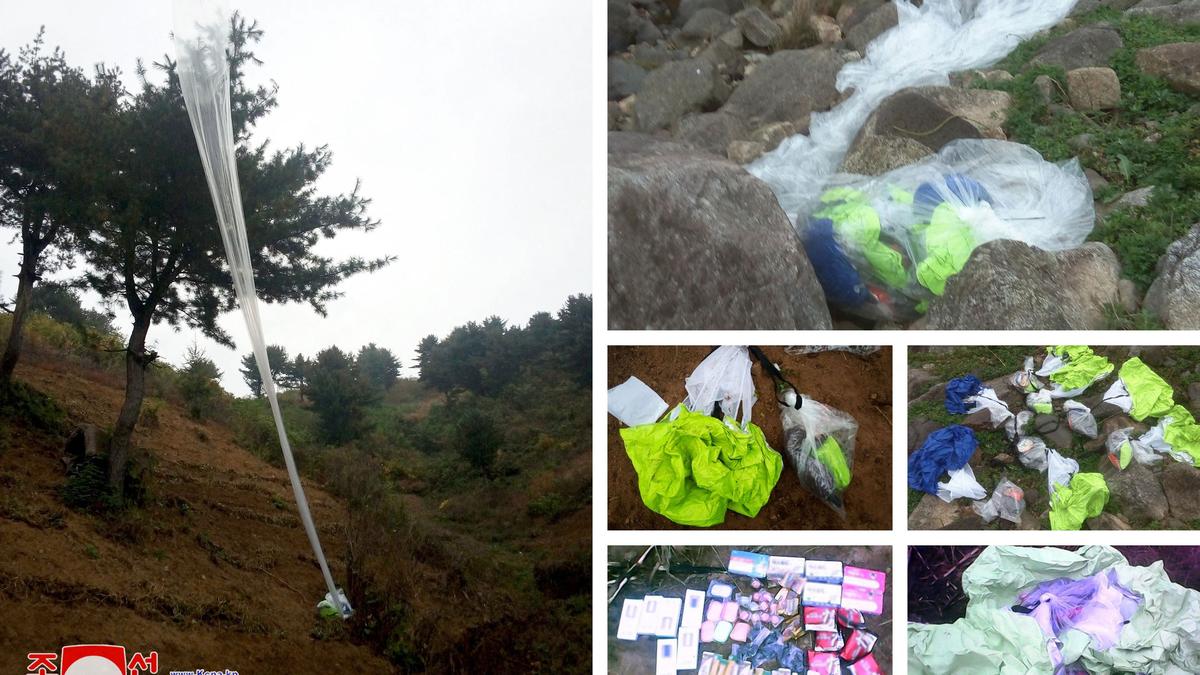“Trash carried by a North Korean balloon fell on the presidential compound in central Seoul on Thursday (October 23, 2024),” officials said, the second such case in recent months that raises concerns about the vulnerability of key South Korean sites during potential North Korean aggression.
The incident comes after the rival Koreas ramped up threats and rhetoric against each other over North Korea’s claims that South Korea flew drones over its capital Pyongyang to scatter propaganda leaflets this month.
South Korea’s presidential security service said in a statement that one of the balloons floated by North Korea burst over the South Korean presidential compound on Thursday (October 23, 2024) morning, dropping rubbish on the ground. No dangerous items were found.
North Korea has sent trash-carrying balloons into South Korea since late May in a resumption of a Cold War-style psychological campaign. The trash that fell on the South Korean presidential compound in July contained no dangerous material and no one was hurt.
It wasn’t immediately known whether South Korean President Yoon Suk Yeol was at the compound during the latest incident. His schedule showed he was due to meet with visiting Polish President Andrzej Duda at his office later Thursday (October 23, 2024).
South Korea’s Dong-A Ilbo newspaper reported earlier Thursday (October 23, 2024) on its website that North Korea’s latest balloons contained propaganda leaflets criticising Mr. Yoon and his wife Kim Keon Hee along with trash.
The newspapers said the leaflets were scattered in areas in Seoul’s Yongsan district, where Mr. Yoon’s presidential office is located, and noted that North Korea has recently begun using GPS technology to drop balloons more accurately in intended locations.

The South Korean presidential security service didn’t immediately confirm the report.
Experts say North Korea likely lacks sophisticated technology to drop balloons on specific targets.
“Whether the balloons have GPS or not, it’s all about launching them in large numbers and hitting the right altitude based on wind direction and speed, so that they can ride those winds to travel,” Lee Choon Geun, an honorary research fellow at South Korea’s Science and Technology Policy Institute, said.
“While some media are saying the accuracy of the balloons has improved, that improved accuracy isn’t because they equipped them with some sort of guidance system, but rather because it’s the season when winds blow southward,” researcher Lee said.
North Korea has earlier accused South Korea of “infiltrating drones” to drop propaganda leaflets over Pyongyang three times this month and threatened military responses if it happened again. South Korea has refused to confirm whether it sent drones but warned that North Korea would face the end of its regime if the safety of South Korean citizens is threatened.
North Korea said its balloon activities were in response to South Korean activists launching anti-Pyongyang leaflets via their own balloons. South Korea responded by restarting propaganda loudspeaker broadcasts at border areas, prompting North Korea to turn on their own frontline loudspeakers.
The Koreas’ Cold War-style campaigns come as North Korean leader Kim Jong Un has increased the pace of his weapons tests and expanded military cooperation with Russia.

U.S. and South Korean officials said Wednesday (October 23, 2024) that 3,000 North Korean troops have been deployed to Russia and are training at several locations. South Korean officials say North Korea eventually aims to send a total of 10,000 troops to Russia to support its war efforts in Ukraine.
South Korea is concerned that Russia may reward North Korea by giving it sophisticated technologies that could improve the North’s nuclear and missile programs that target South Korea and its allies.
Published – October 24, 2024 09:07 am IST




